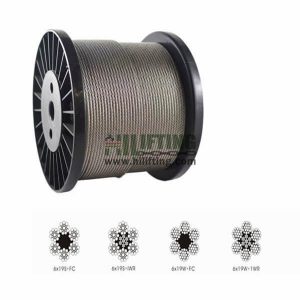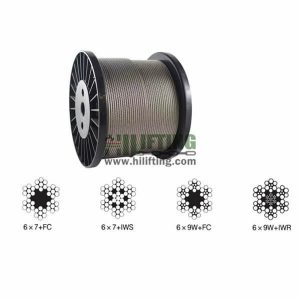Wire rope is often used when something needs strong support or restraint, therefore proper fastening techniques must also be employed to ensure the assembly doesn’t fail under load. Installing a ferrule and end stop — using a process called swaging — is one of the best methods to accomplish this task for light-duty projects.The swaged connection will exceed the rated breaking strength of the wire rope or cable when properly applied. Available in a variety of materials, ferrules and stops can be purchased separately or in convenient kits complete with specifications and the appropriate number of required components for selected applications.

Step 1
Determine the amount of wire rope needed for the project at hand. Include extra length for the intended application of the ferrule and stop. More rope is usually required for a side-by-side splice than for a small end loop.
Step 2
Cut the wire rope to the correct size using a cable cutter or hacksaw. Use a sharp, fine hacksaw blade to make sure all cuts are clean. Keep the ends of the rope as compact as possible.
Step 3
Slide the required number of ferrules onto the wire rope. For a splice, place the ferrules in a row with the ends of the two ropes passing through them in opposite directions. For a loop, pass the end of the rope back through the remaining openings in the ferrules, forming the appropriately sized loop.
Step 4
Arrange the assembly carefully for swaging; once made, the connection is permanent. Leave the required amount of space between ferrules, as well as enough rope protruding from the last ferrule for the end stops. Place a stop on each of the cut ends of the wire rope to prevent the individual wires of the rope from unraveling.
Step 5
Begin assembly with an end stop. Place the fitting between the jaws of the swaging tool and compress it firmly onto the wire rope. Swaging is the act of permanently attaching sleeves and fittings to wire rope. The swaging tool is a cold metal press that allows you to crimp ferrules and other attachments onto the cable. One swage, or crimp, is usually sufficient for smaller fittings.
Step 6
Swage the ferrules by starting at one end and compressing the oval-shaped fitting sideways between the jaws. Use enough force to create a deep indentation. Ferrules require two or more of these compressions per fitting depending on the application.
Step 7
Test the strength of the completed assembly before putting it into service to ensure all fasteners are installed correctly and that it safely performs its intended purpose.
Download this infographic.
Embed Our Infographic On Your Site!





